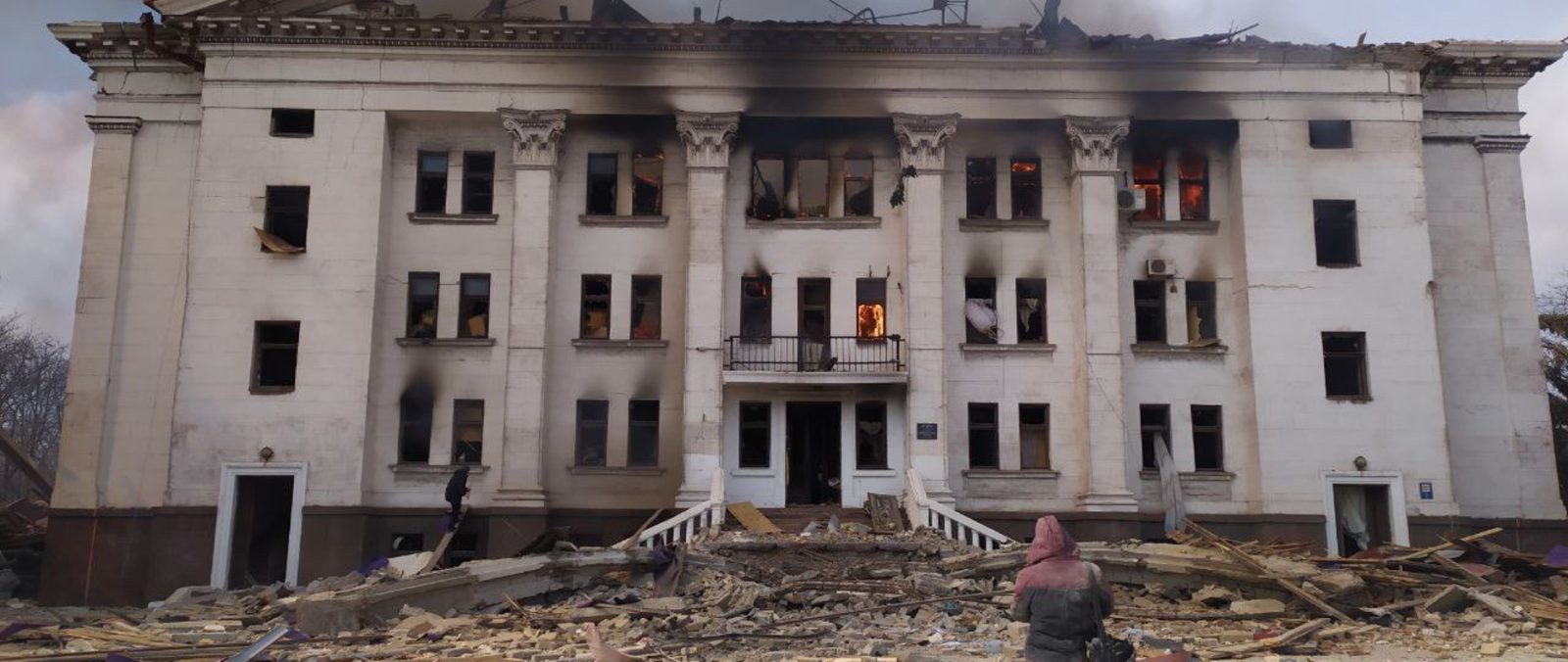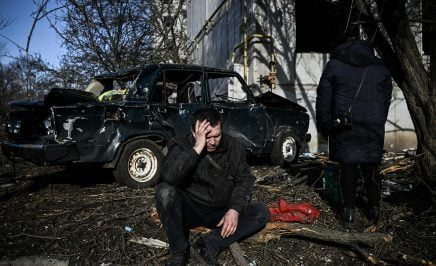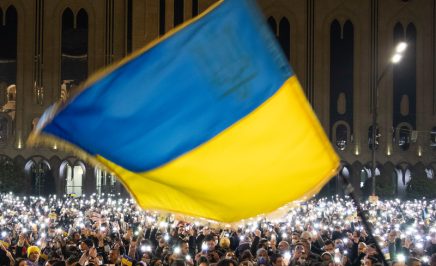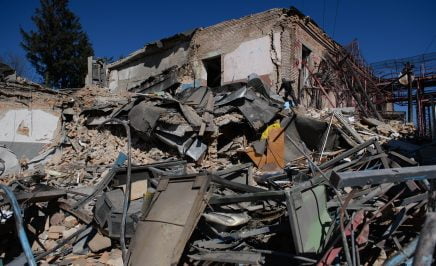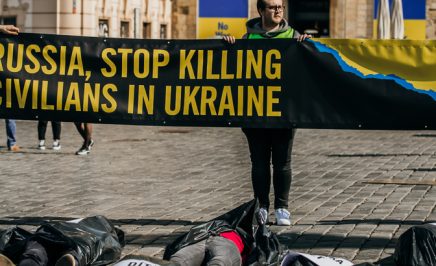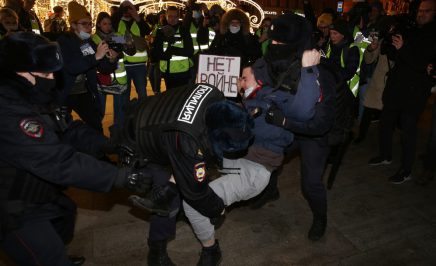An extensive investigation by Amnesty International has concluded that Russian military forces committed a war crime when they struck the Mariupol drama theatre in Ukraine in March, killing at least a dozen people and likely many more.
In a new report, ‘Children’: The Attack on the Donetsk Regional Academic Drama Theatre in Mariupol, Ukraine, the organization documents how the Russian military likely deliberately targeted the theatre despite knowing hundreds of civilians were sheltering there on 16 March, making the attack a clear war crime.
Amnesty International’s Crisis Response team interviewed numerous survivors and collected extensive digital evidence, concluding that the attack was almost certainly carried out by Russian fighter aircraft, which dropped two 500kg bombs that struck close to each other and detonated simultaneously.
“After months of rigorous investigation, analysis of satellite imagery, and interviews with dozens of witnesses, we concluded that the strike was a clear war crime committed by Russian forces, many people were injured and killed in this merciless attack. Their deaths were likely caused by Russian forces deliberately targeting Ukrainian civilians,” said Agnès Callamard, Amnesty International’s Secretary General.
“The International Criminal Court, and all others with jurisdiction over crimes committed during this conflict, must investigate this attack as a war crime. All those responsible must be held accountable for causing such death and destruction.”
Agnès Callamard, Amnesty International’s Secretary General
Amnesty International examined several alternative theories about who was responsible for the attack, and what weapons may have been used. Based on the available credible evidence, the investigation ultimately found that a deliberate air strike targeted at a civilian object was the most plausible explanation.
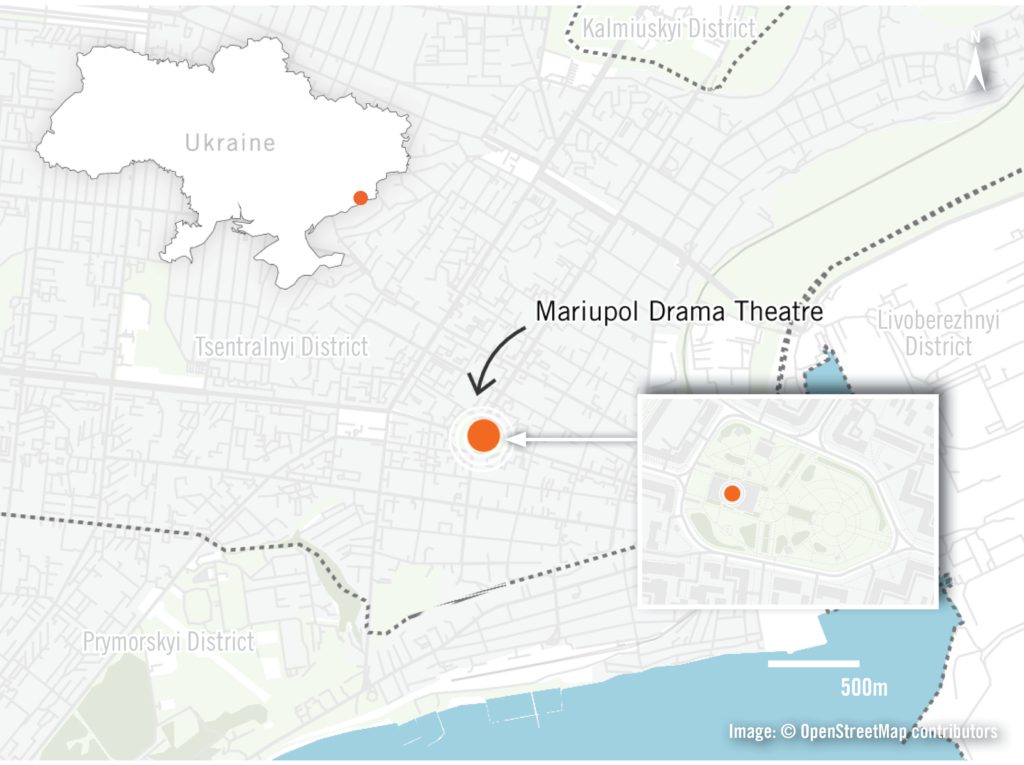
What happened at the Mariupol theatre?
Following the Russian invasion of Ukraine in late February 2022, civilians began fleeing their homes as cities and towns were targeted by military attacks. In besieged Mariupol in the Donetsk region, the theatre became a safe haven for civilians seeking shelter from fighting.
The theatre, in the city’s Tsentralnyi district, was a hub for the distribution of medicine, food and water, and a designated gathering point for people hoping to be evacuated via humanitarian corridors. The building was clearly recognizable as a civilian object, perhaps more so than any other location in the city.
Locals had also written the giant Cyrillic letters “Дети” – Russian for “children” – on forecourts on either side of the building, which would have been clearly visible to Russian pilots and also on satellite imagery.
Nevertheless, Russian bombs struck the theatre shortly after 10 am on March 16th, producing a large explosion that caused the roof and huge portions of two main walls to collapse. At the time of the attack, hundreds of civilians were in and around the theatre.
“I was walking down the street leading to the drama theatre… I could hear the noise of a plane… but at that time I didn’t really pay attention … I saw the roof of the building explode… It jumped 20 metres and then collapsed… I couldn’t believe my eyes because the theatre was a sanctuary. ”
Grigoriy Golovniov, a 51-year-old entrepreneur
Amnesty International believes that at least a dozen people were killed by the strike and likely many more, and that many others were seriously injured. This estimate is lower than previous counts, reflecting the fact that large numbers of people had left the theatre during the two days prior to the attack, and most of those who remained were in the theatre’s basement and other areas that were protected from the full brunt of the blast.
When the bombs detonated, they destroyed the adjacent interior walls along the sides of the performance space, and then breached the exterior load-bearing walls, creating two main debris fields on the north-eastern and south-western sides of the building. Both debris fields are visible on satellite imagery taken just minutes after the strike.
The aftermath of the Mariupol theatre strike
In total, interviewees provided Amnesty International with the full names of four people who were killed: Mykhailo Hrebenetskyi, Lubov Svyrydova, Olena Kuznetsova, and Ihor Chystiakov. They also gave the forenames of three other people they believe were killed. Several survivors and other witnesses reported seeing dead bodies of people they could not identify, and it is likely that many fatalities remain unreported.
Yehven Hrebenetskyi found the body of his father Mykhailo inside the concert hall. Yehven told Amnesty International:
“There were many injured people… At first, I saw his [Mykhailo’s] arm. First, I saw a familiar hand. You know the hand of your loved ones. His face was covered with blood. His body was covered with bricks… I didn’t want my mom to see.”
Yehven Hrebenetskyi, son of Mykhailo and witness of the aftermath
Many other interviewees told Amnesty International they had seen bloodied bodies and dismembered body parts, including legs and hands, in the rubble of the devastated building following the strike.
Dmytro Symonenko was with Lubov Svyrydova moments before she died from her injuries. He told Amnesty International:
“She was severely injured. She managed to crawl from the rubble… she asked us to remember her name, because she felt she was dying.”
Dmytro Symonenko, a witness of the aftermath
Investigating the Mariupol theatre strike
Between March 16th and June 21st, Amnesty International gathered and analysed available credible evidence related to the attack on the theatre. This included 53 first-hand testimonies from survivors and witnesses of the attack and its aftermath, 28 of whom were inside or adjacent to the theatre at the time. Amnesty International also analysed satellite imagery and radar data from immediately before and shortly after the attack; authenticated photographic and video material provided by survivors and witnesses; and two sets of architectural plans of the theatre.
This was supported by an open-source investigation by Amnesty International’s Crisis Evidence Lab, who examined and verified 46 photos and videos of the strike that were shared on social media, as well as an additional 143 photos and videos that were privately shared with researchers.
Amnesty International’s ongoing documentation of violations of human rights and international humanitarian law committed during the war in Ukraine is available here.
Amnesty International’s Crisis Evidence Lab is an example of how we shine a light on great wrongs by exposing the facts others try to suppress. We are a global movement of 10 million people standing up for justice, freedom, and equality. Together, our voices challenge injustice and are powerful enough to change the world. Find out more about what we do and our crisis response work.
